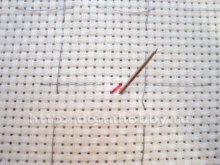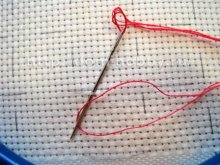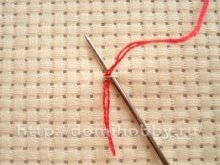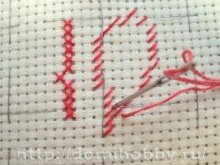 There is no need to practice and study different types of stitches to start breathing. It's enough to see how to handle the stitches. Cross♪ how to properly secure the thread at the beginning and at the end of the stitch, as well as several councils and the rules for baptizing♪
There is no need to practice and study different types of stitches to start breathing. It's enough to see how to handle the stitches. Cross♪ how to properly secure the thread at the beginning and at the end of the stitch, as well as several councils and the rules for baptizing♪
The stitch is the fastest stitch that consists of two stitches on the face of two perpendicularly intersecting lines. One rule must be followed: all lower stitches must be directed on the same side and the top on the other.
For starters to breathe, it's better to pick simple, small diagrams, with a small number of flowers, or to buy a drying kit where all the necessary materials and tools are already collected.
Before you start your work, study carefully the scheme, determine how many cells in the width and height it is, pick up the required colours. Then prepare the canva by counting a piece of material, adding 2-3 cm to the edges, cut the tissue.
In order to make further calculations on the canvas, make a marking in 10 cells by a special pencil (don't use a normal pencil or a marker) or press the thread.
If you notice the initial precinct on the tissue, pull the canva on the fingers.
 Cutting the thread, measuring it for not more than 40 cm, or it's gonna be stuck in the job. The scheme always indicates how many thread deposits need to be used in the drying, if not, at your discretion.
Cutting the thread, measuring it for not more than 40 cm, or it's gonna be stuck in the job. The scheme always indicates how many thread deposits need to be used in the drying, if not, at your discretion.
Don't ever do knots to secure the thread at the beginning or at the end of the stitches. Fill the thread. in several ways:
At the beginning, when stitched into two threads (or another even number) it is convenient to secure the thread. To do this by taking one thread, putting it in half, put both ends in the needle.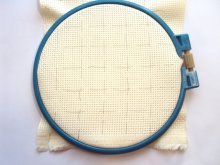 On the intel side, make a little stitch, pass the needle into a double thread and pull.
On the intel side, make a little stitch, pass the needle into a double thread and pull.
The thread can be fixed with several stitches, both at the beginning and at the end of the job. Make 2-3 little stitches trying to nail the thread.
At the end of the work, pull the thread on the innside under the stitches of the finished baptisms, make the stitch tight and cut the thread.
Each cross can be stitched separately, first stitched to the left and then left to the right, but it's best to start with the lower stitches and then the top.
